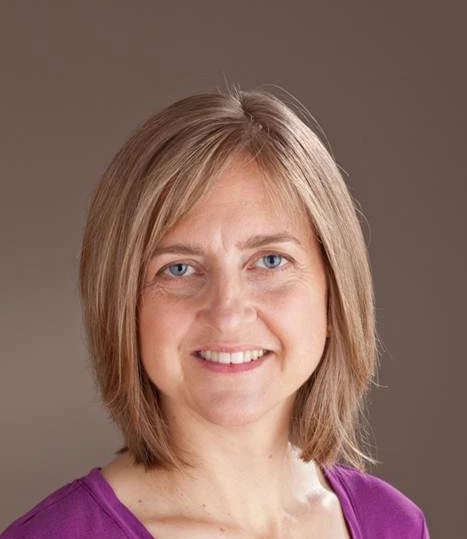Be Here Now – Yoga’s Present Moment and the Practice of Madhu Vidya

Be in the present moment. Experience your breath, watch your thoughts without judgment. These are instructions often given in yoga classes. The opportunity to “be in the present moment” is often touted as one of the benefits of taking yoga. But what does this really mean?
Yoga is a vast, varied and extremely old practice. The directive to “be in the present moment” is a powerful, timeless directive, the origin of which can be traced back to many of the early yogic writings. In his Yoga Sutra (about 200 C.E.), defined yoga as “the cessation of the fluctuations of the mind.” Certainly, when this is achieved, the practitioner has come into the present moment.
Patanjali’s work was a great treatise on the cosmologic order of the universe, the human being’s role in that order, and the nature of the mind. Patanjali wrote that the ultimate goal of the practice of yoga was to remove the veils of the ego and abide solely in the nature of the Purusha – or cosmic consciousness, in other words, God. So the practice of Patanjali yoga is not only to be in the present, but to understand that present as the abode of the Divine.
The wide variety of Tantric and Vedic writings on yoga which have contributed to this great tradition are centered around this teaching.
In Tantric yoga philosophy, moving towards a state of non-judgmental existence in the present moment is achieved within the foundation of a deep understanding of the nature of the universe. According to Tantra, the entire universe is composed of the fabric of Divine Love or prema. Because the matrix of reality is prema, the experience of being in the present moment is the experience of waking up to the blissful reality of the universe.
In other words, the present moment isn’t a quiet reflection of the ego – it is an ecstatic merging of self into a super-conscious, rarified, vibrational field of Love. Yogis throughout the ages have tried to describe this state and use the Sanskrit word Samadhi to encapsulate its essence, but it is truly only accessible through experience. Most people have spontaneously or randomly approached Samadhi at one time or another in their lives – while staring at the ocean or gazing out at mountains or in a deep state of communion with the divine. Yoga, in its many forms, provides the technology, developed and honed over centuries of time, to consciously cultivate a regular experience of Samadhi, generally through meditation practices.
And when you are not sitting and meditating, how can you encourage this cultivation? To completely remember who you are is to experience ecstasy. In Tantra, the practice of being in the present moment is called Madhu Vidya which means “sweet knowledge.” This is the practice of remembering the intrinsic sweetness of life – that every thing, every situation, person, place, and moment, is an expression of, is sheltered by, is actually composed of the loving force of the cosmos.
According to Tantra philosophy, when it feels like love is not the dominant force in a situation, when we are faced with challenges and heartache, we are reminded to gently but firmly guide our egos back to Madhu Vidya, to that sweet remembrance, which can help us see our situation as either a learning experience, a karmic payback, or an opportunity for growth. Maintaining a positive attitude even in the midst of adversity is certainly difficult. The practice of Madhu Vidya offers a direct route back to the Divine source in order to diffuse suffering.
To experiment with the practice of Madhu Vidya notice when you encounter a difficult moment in your day. Stop, breathe, remember who you are. Remembering that the moment, the situation, your body and the breath that you watch pass in and out of your lungs, are all manifestations of the powerful loving force of the universe.
 Kristine Kaoverii Weber is the founder of Subtle Yoga in Ashville and Charlotte, North Carolina. She has been a student of yoga since she was introduced to it in sixth grade. Kaoverii has been teaching yoga for more than twenty years. And her work these days focuses on providing yoga teacher trainings on the 200- hour and 500-hour level. Kaoverii is the director of Sarva Health, an organization which provides holistic yoga-based trainings to enhance community health infrastructure. In particular, Kaoverii developed the first RYT 200-hour training program specifically for mental health and substance abuse treatment professionals to be offered by a major continuing education institution. She is a frequent contributor to national magazines and the author of Healing Self Massage which shows how to use massage as a complement to yoga practice to relieve stress, neck and back pain, insomnia, and anxiety.
Kristine Kaoverii Weber is the founder of Subtle Yoga in Ashville and Charlotte, North Carolina. She has been a student of yoga since she was introduced to it in sixth grade. Kaoverii has been teaching yoga for more than twenty years. And her work these days focuses on providing yoga teacher trainings on the 200- hour and 500-hour level. Kaoverii is the director of Sarva Health, an organization which provides holistic yoga-based trainings to enhance community health infrastructure. In particular, Kaoverii developed the first RYT 200-hour training program specifically for mental health and substance abuse treatment professionals to be offered by a major continuing education institution. She is a frequent contributor to national magazines and the author of Healing Self Massage which shows how to use massage as a complement to yoga practice to relieve stress, neck and back pain, insomnia, and anxiety.



